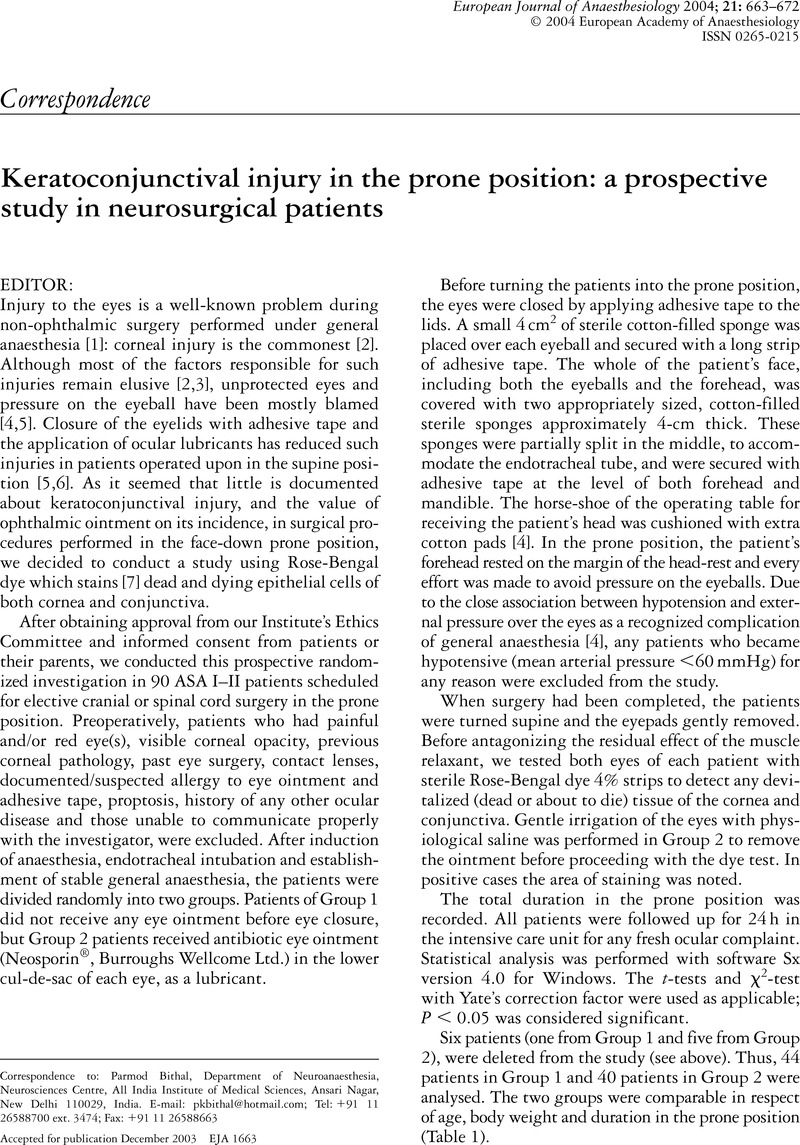No CrossRef data available.
Article contents
The new PAXpress airway device during mechanical ventilation in anaesthetized patients: a prospective, randomized comparison with the laryngeal mask airway
Published online by Cambridge University Press: 23 December 2004
Abstract
An abstract is not available for this content so a preview has been provided. Please use the Get access link above for information on how to access this content.

- Type
- Correspondence
- Information
- Copyright
- 2004 European Society of Anaesthesiology
References
Brimacombe J. The advantages of the LMA over the tracheal tube or face mask: a meta-analysis. Can J Anesth 1995; 42: 1017–1023.Google Scholar
Casati A, Fanelli G, Casaletti E, Cappelleri GL, Magistris L, Aldegheri G. Do we need new supraglottic devices? Minerva Anestesiol 1999; 65: 823–830.Google Scholar
Mondello E, Casati A, Italian PAXpress Group. A prospective, observational evaluation of a new supraglottic airway: the PAXpress. Minerva Anestesiol 2003; 69: 517–522.Google Scholar
Ahmed SM, Maroof M, Khan RM, Singhal V, Rizvi KA. A comparison of the laryngeal mask airway and PAXpress for short surgical procedures. Anaesthesia 2003; 58: 42–44.Google Scholar
Brimacombe J. Analysis of 1500 laryngeal mask uses by one anaesthetist in adults undergoing routine anaesthesia. Anaesthesia 1996; 51: 76–80.Google Scholar
Hardman JG, Aitkenhead AR. Estimating alveolar dead space from the arterial to end-tidal CO2 gradient: a modelling analysis. Anesth Analg 2003; 97: 1846–1851.Google Scholar
Casati A, Fanelli G, Torri G. Physiological deadspace/tidal volume ratio during face mask, laryngeal mask, and cuffed oropharyngeal airway in anesthetized adult patients. J Clin Anesth 1998; 10: 652–655.Google Scholar




